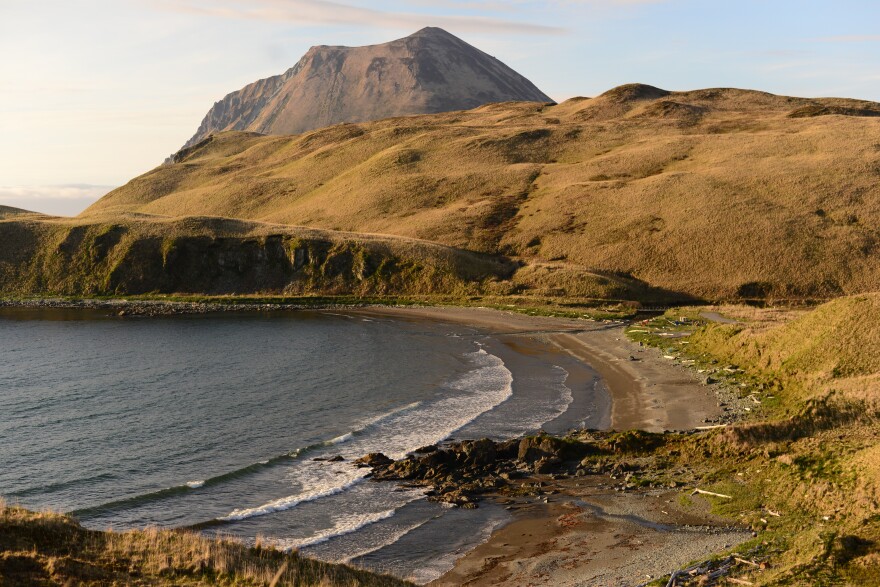Thousands of dead seabirds washed up on Alaska's shores this summer, marking the state's fifth straight year of mass die-offs.
The carcasses have ranged from short-tailed shearwaters in Unalaska and Bristol Bay to auklets and murres in Nome and Kotzebue.
The Coastal Observation and Seabird Survey Team (COASST) is among the organizations tracking the mortalities. The group will be in Unalaska on Friday, Oct. 4 to host a seabird training for community members.
KUCB's Laura Kraegel spoke with COASST coordinator Hillary Burgess to learn more.
TRANSCRIPT
HILLARY BURGESS: COASST stands for the Coastal Observation and Seabird Survey Team, and we're based at the University of Washington. We engage members of the public in monitoring for marine ecosystem health, and the main method that we have is looking at rates of beached birds — so dead birds on beaches.
KUCB: COASST has been doing this since 1999. Now, you work with folks up in Utqiagvik, Alaska all the way down to Mendocino County, California. What's the purpose of all of that work? What does it help us understand?
BURGESS: With a whole lot of different eyes and ears searching for dead birds, we have established a sense of what's normal in a given place and time, in terms of numbers and species. And then, we're tracking change against that — and also able to detect unusual events, like mass-mortality events or die-offs that we've been seeing more frequently in recent years, including in Unalaska.
KUCB: What have we found as you track those mass mortalities? Do we know why they're happening? And who is using the data to figure that out?
BURGESS: The program was established originally to develop a baseline understanding so that, specifically, in the event of a future oil spill, we would be able to track the impacts. In the time since the program developed, what has actually happened is there have been major mortality events of seabirds but they have not been linked, in our region so much, with oil spills as they have with warmer-than-normal sea surface temperature. So beached birds are serving as a really visual indicator of changes in the marine ecosystem. Our data users are largely resource management agencies, like the U.S. Fish and Wildlife Service, the National Marine Fisheries Service through NOAA, and tribal entities like the Aleut Community of St. Paul Island. We kind of have a growing network of folks who are really concerned with the things that they're seeing in their communities and want to understand how it links with the larger picture.
KUCB: You mention St. Paul, which found hundreds of dead puffins on its beaches a few years ago after the birds died of starvation. They had had trouble finding food because the species they eat were moving elsewhere in search of cooler water. Are die-offs on that scale something Unalaska might expect to see going forward? Why is it important that you hold this training in Unalaska and try to get more Unalaska people involved in this program?
BURGESS: Unalaska is a very rich place in terms of bird diversity and marine resources. And I know that, for example, just this year, the Bering sea northward — half the state, I suppose — has experienced a short-tailed shearwater mass-mortality event. Thousands of birds have washed in, and this particular event was witnessed there [in Unalaska.] So, to really get a grasp on the kind of magnitude and duration and extent of these sorts of die-offs, Unalaska is kind of an essential piece in the puzzle in the region, as far as what the pattern is.
KUCB: Unalaska's Sea Grant agent, Melissa Good, already does some tracking for COASST. But with a pretty big mission like that in mind, you're going to be holding this training to teach even more local people to identify dead birds, collect data on them, and add the information to the COASST database where it can be studied. Who should attend this class? Who's the right person?
BURGESS: Anyone who enjoys spending time outside and on a beach, on average, for maybe an hour at a time once a month. That's the commitment we're looking for. We look forward to a fun, hands-on training. We have a variety of specimens that we'll be practicing with and getting up close and personal with some beautiful birds.
COASST's training is Friday, Oct. 4 from 9:30 a.m. to 3:30 p.m. at Unalaska's public library. Community members can register by calling 206-221-6893 or emailing coasst@uw.edu.






